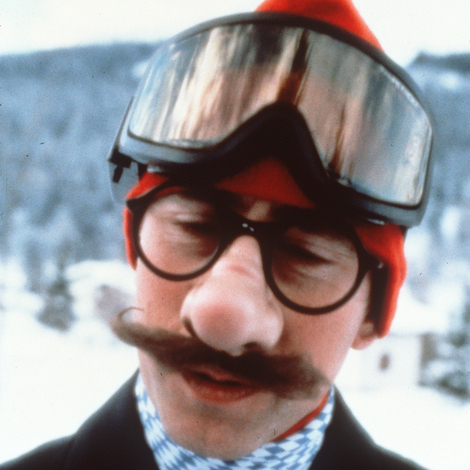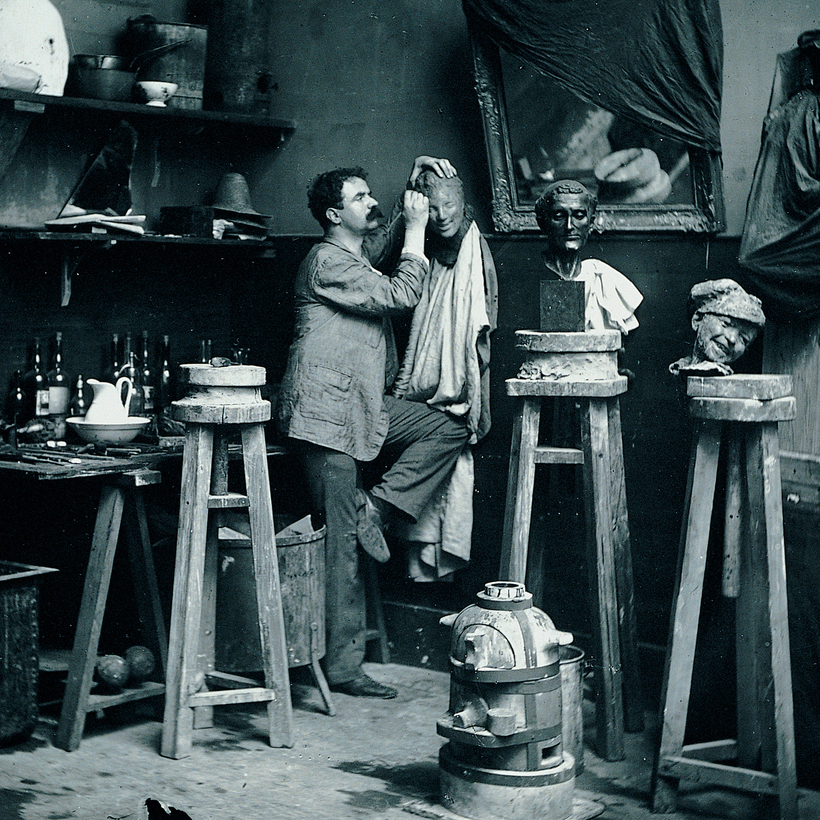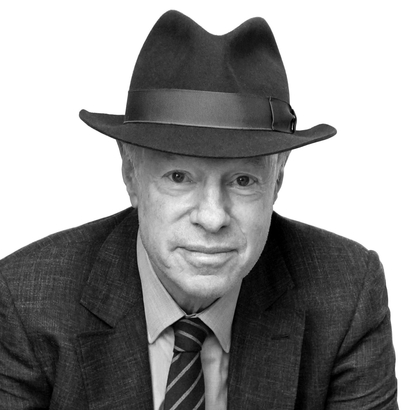Medardo Rosso is not a name you are likely to know, but Renoir and Degas looked up to him as a friend who went in directions they would not have dared. Later artists, from the Italian futurists to Brancusi, considered him a mentor. Rosso’s experiments gave courage to those who would abandon the rules of classicism, and who were ready to dissolve form. He seduced his audience by making sculptures, photographs, and drawings that are at once sumptuous and mysterious. Opening today at the Kunstmuseum Basel, the large and comprehensive exhibition “Medardo Rosso: Inventing Modern Sculpture” is a rare opportunity to immerse yourself in a haunting universe.

Rosso’s work takes us on a journey by casting a spell of enchantment. The way he renders facial features in marble and plaster conjures up white truffles—their chalky color, the inexplicable appeal to our senses, and the subtlety with which they inspire emotional transport. But, also like white truffles, these sculptures appeal to a rarefied taste, which may explain why they are not as well known as the art of Auguste Rodin, a friend and competitor.
It is the slightly out-of-focus aspect of Rosso’s work, its quality of being just beyond our grasp, that perhaps explains why he has not received his due.
But don’t be put off by what cannot be instantly understood. One must succumb to Rosso’s marvelous surfaces, to the way he orchestrates light, without asking too many questions.

Rosso—who was born in Turin in 1848, lived in Paris from 1889 to 1920, and then moved to Milan, where he died in 1928—has been periodically re-discovered, then forgotten again, then re-discovered again. His greatest leg up in America came when the intrepid Margaret Scolari Barr, the wife of the Museum of Modern Art’s legendary director Alfred H. Barr Jr., assisted with a MoMA show on Rosso in 1963 and wrote its splendid catalogue. Her passion for Rosso’s work and her knowledge of it uniquely qualified her to advise the exhibition’s curator and write the book.
Scolari Barr pinpointed Rosso’s unique qualities as well as his relation to other artists. “He never tried consciously to emulate the Impressionist painters, yet, like them, he was passionately interested in light and, like them, he wanted to fuse his subjects with the air, the sun, the haze, the gaslight, and the color in which they were steeped. This is what he meant when he said: ‘Nothing is material in space,’ or ‘We are nothing but a play of light.’”

Rosso’s photographs, most of them images of his sculptures in the studio, are riveting enigmas. He sometimes worked on the negatives by hand, and they reveal his existential questioning of what is real and what is not. As with his achievements in plaster and bronze, it is hard to pin down exactly what it is that we are seeing. Rosso’s battle to get to the essence of the amorphous, while at the edge of terrifying, is thrilling.
“Medardo Rosso: Inventing Modern Sculpture” is on at the Kunstmuseum Basel, in Switzerland, until August 10
Nicholas Fox Weber is the executive director of the Josef & Anni Albers Foundation and the author of 16 books, including the recent Mondrian: His Life, His Art, His Quest for the Absolute


